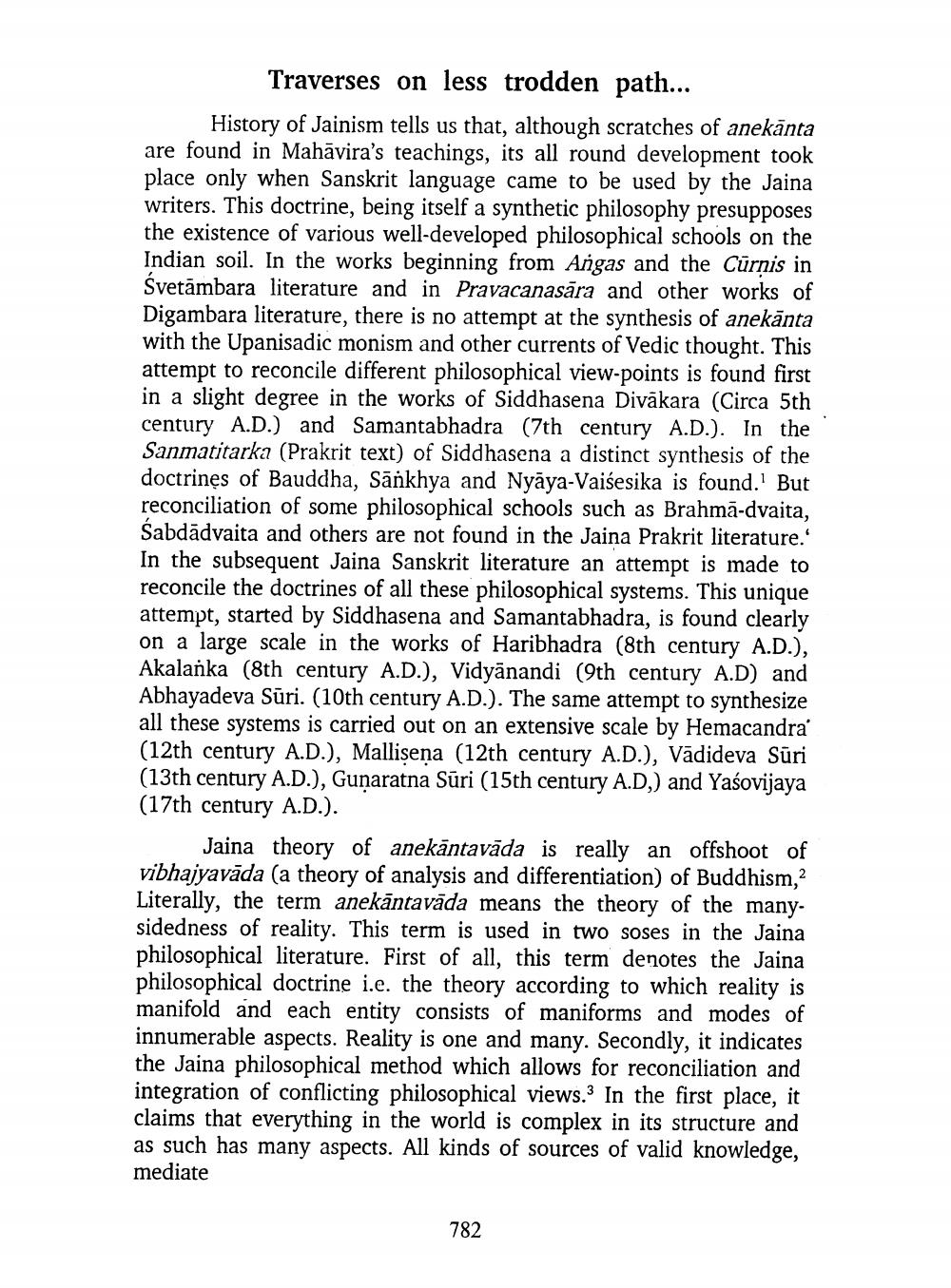________________
Traverses on less trodden path... History of Jainism tells us that, although scratches of anekānta are found in Mahāvira's teachings, its all round development took place only when Sanskrit language came to be used by the Jaina writers. This doctrine, being itself a synthetic philosophy presupposes the existence of various well-developed philosophical schools on the Indian soil. In the works beginning from Angas and the Cūrnis in Svetāmbara literature and in Pravacanasāra and other works of Digambara literature, there is no attempt at the synthesis of anekānta with the Upanisadic monism and other currents of Vedic thought. This attempt to reconcile different philosophical view-points is found first in a slight degree in the works of Siddhasena Divākara (Circa 5th century A.D.) and Samantabhadra (7th century A.D.). In the Sanmatitarka (Prakrit text) of Siddhasena a distinct synthesis of the doctrines of Bauddha, Sankhya and Nyāya-Vaiśesika is found.' But reconciliation of some philosophical schools such as Brahmā-dvaita, Sabdādvaita and others are not found in the Jaina Prakrit literature.' In the subsequent Jaina Sanskrit literature an attempt is made to reconcile the doctrines of all these philosophical systems. This unique attempt, started by Siddhasena and Samantabhadra, is found clearly on a large scale in the works of Haribhadra (8th century A.D.), Akalanka (8th century A.D.), Vidyānandi (9th century A.D) and Abhayadeva Sūri. (10th century A.D.). The same attempt to synthesize all these systems is carried out on an extensive scale by Hemacandra (12th century A.D.), Mallisena (12th century A.D.), Vadideva Suri (13th century A.D.), Gunaratna Sūri (15th century A.D,) and Yaśovijaya (17th century A.D.).
Jaina theory of anekāntavāda is really an offshoot of vibhajyavāda (a theory of analysis and differentiation) of Buddhism, Literally, the term anekāntavāda means the theory of the manysidedness of reality. This term is used in two soses in the Jaina philosophical literature. First of all, this term denotes the Jaina philosophical doctrine i.e. the theory according to which reality is manifold and each entity consists of maniforms and modes of innumerable aspects. Reality is one and many. Secondly, it indicates the Jaina philosophical method which allows for reconciliation and integration of conflicting philosophical views. In the first place, it claims that everything in the world is complex in its structure and as such has many aspects. All kinds of sources of valid knowledge, mediate
782




